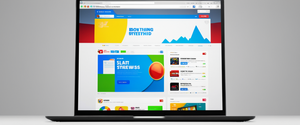
Pinterest presents a unique challenge for users seeking to minimize or eliminate advertisements from their browsing experience, as the platform has deliberately positioned advertising as its fundamental business model while declining to offer an official premium, ad-free tier comparable to competitors like YouTube or Spotify. Unlike many free web services that provide users with the option to pay for advertisement removal, Pinterest has maintained a firm commitment to displaying promotional content across all user accounts, regardless of engagement level or tenure. However, a sophisticated ecosystem of third-party solutions has emerged to address this challenge, ranging from official platform settings that allow users to reduce ad personalization to comprehensive browser extensions capable of filtering promoted pins from feeds. This report examines the multifaceted landscape of ad-blocking strategies available to Pinterest users, analyzing both the built-in control mechanisms provided by the platform itself and the external technological tools that have become increasingly effective at circumventing Pinterest’s advertising infrastructure. The analysis encompasses desktop and mobile approaches, evaluates the technical capabilities and limitations of leading ad-blocking solutions, and contextualizes these strategies within the broader ethical and economic implications of digital advertising resistance.
Understanding Pinterest’s Advertising Model and Business Structure
Pinterest operates fundamentally as a visual discovery and inspiration platform that monetizes user engagement through sophisticated advertising mechanisms rather than subscription fees or premium tiers. The platform’s business model relies entirely on advertising revenue from brands seeking to reach Pinterest’s user base of over 570 million monthly active users. This advertising-dependent structure means that Pinterest has chosen not to follow the pattern established by competitors like YouTube Premium or Netflix, which offer ad-free experiences at a premium price point. Instead, Pinterest treats advertisements as an integral and unchangeable aspect of the user experience across all account types.
The fundamental reason Pinterest displays such high volumes of promotional content stems from this revenue dependency. Advertisers pay to promote their products and services through “Promoted Pins,” which appear indistinguishably from organic content in users’ home feeds and search results. These promoted pins are specifically designed to blend seamlessly with authentic user-generated and curated pins, leveraging Pinterest’s visual format to create what marketing professionals describe as a non-disruptive advertising experience. Pinterest’s engineering teams have invested substantially in machine learning infrastructure to personalize these advertisements based on granular user data including search history, saved pins, engagement patterns, and—when permitted by user settings—data collected from external websites visited by users.
The technical architecture that supports Pinterest’s advertising demonstrates considerable sophistication. Pinterest processes billions of data points daily through advanced machine learning models to optimize ad targeting and maximize relevance. The platform employs deep neural networks and transformer architectures to analyze user behavior sequences and recommend advertisements that align with inferred interests. This technological investment reflects Pinterest’s commitment to making advertising central to its revenue generation strategy, with some sources indicating that the platform has even considered acquisitions of advertising technology companies to strengthen its monetization capabilities.
Importantly, Pinterest has articulated its competitive positioning regarding advertisements. The platform emphasizes that weekly Pinterest users report finding ads more relevant compared to other social media platforms, and that because users come to Pinterest with purchasing intent and discovery mindset, advertisements often enhance rather than detract from the user experience. This perspective fundamentally differs from platforms where users primarily socialize or consume entertainment, and this distinction shapes how Pinterest approaches the question of ad reduction or elimination. The company’s policies clearly state that while users cannot completely disable advertisements, they retain some control over ad personalization and can block individual advertisers.
Official Pinterest Controls and Built-In Ad Management Features
Pinterest provides users with officially sanctioned mechanisms to reduce ad personalization and manage their exposure to promotional content, though these mechanisms operate within strict limitations that preserve the platform’s fundamental advertising model. Understanding these built-in controls represents an essential first step for users seeking to minimize ad interference, as these solutions require no external software installation and operate within Pinterest’s terms of service.
Privacy and Data Settings Adjustments
The most direct approach available within Pinterest’s native features involves accessing the platform’s Privacy and Data settings, which allow users to limit the categories of information Pinterest uses to generate targeted advertisements. Users accessing Pinterest through a web browser can navigate to Settings, then Privacy and Data, where they encounter several toggleable options that fundamentally alter how Pinterest’s advertising algorithm functions. By unchecking “Use information from our partners,” users prevent Pinterest from incorporating third-party data sources—such as information from advertising partners and tracked browsing history from external websites—into their ad targeting profiles.
This setting proves particularly significant because it directly addresses the data aggregation practices that enable Pinterest to recognize users across multiple websites and serve highly personalized advertisements based on their broader online behavior. When users disable this option, Pinterest shifts from showing highly targeted advertisements based on extensive behavioral profiling to displaying ads based primarily on within-platform activity such as pins saved, boards followed, and searches conducted. Additionally, users can toggle off “Use info from sites you visit,” which prevents Pinterest from tracking their browsing activity through the Pinterest web button and other tracking mechanisms embedded across the internet.
The “Activity for ads reporting” setting controls whether Pinterest shares user activity data with advertisers for campaign measurement purposes. Disabling this setting prevents advertisers from receiving conversion data tied to specific user segments, though it does not reduce the total number of advertisements displayed. Similarly, turning off “Ads about Pinterest” prevents the platform from using accumulated Pinterest activity to promote the platform’s own services and features to users. These granular controls represent Pinterest’s official concession to user privacy preferences, though importantly, Pinterest explicitly acknowledges that adjusting these settings does not reduce the total number of advertisements users encounter—these settings exclusively address the personalization mechanisms that make advertisements more targeted and potentially more persuasive.
Manual Advertisement Hiding and Advertiser Blocking
Pinterest’s native interface provides users with the ability to hide individual advertisements and block specific advertisers, creating a feedback mechanism that theoretically trains the platform’s algorithm to show fewer similarly-categorized ads in the future. When users encounter a promoted pin they find irrelevant or undesirable, clicking the three-dot menu icon reveals options including “Hide this ad,” “Not relevant,” or “Report pin.” Selecting any of these options signals to Pinterest’s machine learning systems that the user does not wish to see similar content.
Users report that consistently hiding advertisements—particularly hiding five or more ads during a single browsing session—can produce noticeable reductions in visible promotional content for limited periods. Some anecdotal evidence suggests that this manual hiding process functions more effectively when combined with hiding ads multiple times in succession, as repeated negative signals apparently strengthen the algorithm’s understanding of user preferences. However, this effect appears temporary; users typically report that after several days or weeks, advertisements resurface at previous or nearly-previous frequency levels as Pinterest’s algorithmic systems update based on fresh user activity data.
The advertiser blocking feature permits users to block up to 1,000 individual advertisers at the account level. This hard constraint reflects Pinterest’s architecture and represents a significant practical limitation, as the population of active advertisers substantially exceeds this threshold, meaning users cannot comprehensively block all advertisers through this mechanism. Nevertheless, blocking frequently-encountered advertisers whose products generate no interest for a particular user can meaningfully reduce the appearance of irrelevant ads over time. Each time a user blocks a specific advertiser’s Pinterest profile, that advertiser’s promoted pins cease appearing in that user’s feed, though the user continues to see promoted content from other advertisers.
Limitations of Official Pinterest Controls
The critical limitation of all officially-supported ad management features provided by Pinterest is that they function within parameters designed to preserve advertising as a core platform component. None of these official controls reduce the frequency with which advertisements appear; they exclusively modify either the personalization basis for advertisements or filter out specific advertiser profiles. Users consistently report that even after maximizing all privacy settings and manually hiding numerous advertisements, they continue to encounter large quantities of promoted content when scrolling through their home feeds.
Furthermore, Pinterest explicitly disclaims that these settings produce complete ad elimination. The platform’s official help documentation consistently states that “while you can’t turn off ads completely, you can limit the kinds of information we use to pick which ads you see”. This phrasing reflects Pinterest’s strategic decision that its business model fundamentally requires displaying advertisements to all users without exception, making the question of ad blocking a matter of reducing personalization and frequency rather than achieving ad-free browsing. Users accustomed to platforms like YouTube, which offer legitimate ad-free options through paid subscriptions, frequently express frustration at Pinterest’s unwillingness to provide equivalent paid alternatives.
Browser-Based Ad Blocking Solutions and Technical Implementations
Because Pinterest’s official features cannot eliminate advertisements entirely, a robust ecosystem of browser extensions and dedicated ad-blocking applications has developed to provide more comprehensive blocking capabilities. These solutions operate at the browser level, intercepting and filtering web page elements before they render in the user’s viewport, allowing for removal of sponsored content that Pinterest’s native controls cannot address.
uBlock Origin: The Leading Open-Source Solution
uBlock Origin represents the most widely-recommended and technically sophisticated general-purpose ad blocker capable of blocking Pinterest advertisements, having achieved significant adoption with over 10 million active users on Chrome alone and additional millions on Firefox, Edge, and other Chromium-based browsers. This open-source extension, maintained by developer Raymond Hill, functions as a comprehensive content blocker that operates through pattern-matching rules applied to web page elements before rendering. The extension’s architecture prioritizes efficiency, maintaining low CPU and memory overhead compared to competing ad blockers, a design philosophy that has contributed significantly to its popularity among technically-savvy users.
For Pinterest specifically, uBlock Origin requires users to implement custom filters that target the specific HTML structure and CSS classes Pinterest uses to mark promoted pins. The recommended filters for Pinterest include XPath expressions such as `pinterest.*##:xpath(‘//*[contains(text(),”Promoted”)]’):upward([data-grid-item])` and `www.pinterest.com##:xpath(//div[@title=”Promoted by”]/ancestor::node())`. These filters instruct uBlock Origin to identify DOM elements containing “Promoted” text or attributes and remove their parent containers from the page display. Implementation requires accessing uBlock Origin’s dashboard, navigating to the settings panel, and pasting the custom filters into the designated custom filters field.
The effectiveness of uBlock Origin for Pinterest depends on the currency and accuracy of these custom filters. Because Pinterest occasionally modifies its advertising markup and page structure, the filters may lose effectiveness until updated by community members who maintain ad-blocking filter lists. Users report that even when properly configured, uBlock Origin sometimes fails to catch all promoted pins, particularly when Pinterest implements new advertising formats or layout structures that deviate from existing filter patterns. Additionally, some Pinterest advertisements may slip through if they use unexpected HTML structures or if Pinterest intentionally obfuscates advertising markup to evade filtering mechanisms.
AdBlock and AdBlock Plus: Established Commercial Solutions
AdBlock and its fork AdBlock Plus represent established commercial ad-blocking extensions available across major browsers, with AdBlock reporting over 60 million users worldwide. These extensions function through filter list-based mechanisms similar to uBlock Origin but maintain curated, actively-maintained filter lists by default rather than relying primarily on community contributions. For Pinterest, AdBlock users can implement custom filters such as `pinterest.*##[data-grid-item]:has([class =”x8f INd _O1 KS5 mQ8 OGJ YbY”])`, which target the specific CSS classes applied to Pinterest’s grid-based pin layout system.
The AdBlock extension operates with a freemium model, offering basic ad-blocking free of charge while reserving advanced features including distraction control, cookie consent management, and comprehensive tracking protection for premium subscribers. Testing by independent ad-blocking research organizations indicates that AdBlock Premium achieves approximately 50 advertisements blocked on typical news websites, though its effectiveness varies significantly by site depending on filter list comprehensiveness. The premium version includes the ability to swap blocked advertisements with user-selected images, a feature designed to reduce the visual void left by removed ads on some websites, though this represents a minor quality-of-life enhancement rather than functional improvement.
A significant challenge with both AdBlock and AdBlock Plus involves the “Acceptable Ads” program, through which certain advertisers and publishers pay to have their ads exempted from blocking by default. This program, while designed to allow respectful advertising to continue supporting content creators, has generated controversy among ad-blocking advocates who view it as compromising the purpose of ad blockers. Users who philosophically oppose any advertising can disable the Acceptable Ads filter, though the default configuration permits these vetted advertisements to display.
Protect Your Digital Life with Activate Security
Get 14 powerful security tools in one comprehensive suite. VPN, antivirus, password manager, dark web monitoring, and more.
Get Protected NowAdGuard: Comprehensive Cross-Platform Solution
AdGuard operates as both a browser extension and a system-wide ad-blocking application available for Windows, macOS, Android, and iOS platforms, providing users with options for ad blocking across multiple contexts and devices. The browser extension version functions similarly to uBlock Origin through custom filter implementation, while the paid system-wide applications provide network-level ad blocking that affects ads in browsers, standalone applications, and other system-level networking contexts. For Pinterest specifically, AdGuard users can configure custom filters in the “User Rules” section, implementing filters such as `pinterest.*##[data-grid-item]:has([class =”Eqh zI7 iyn Hsu”])` and `pinterest.com##DIV[data-test-pin-id=”-“]`.
AdGuard’s premium offerings emphasize privacy protection alongside ad blocking, with features including DNS-level privacy controls, custom filter lists from any URL, and security filters designed to protect users from malicious websites. The iOS version, AdGuard for Safari, functions within Apple’s App Extension framework and can remove ads specifically in Safari while maintaining compatibility with other apps. User reviews consistently praise AdGuard’s straightforward interface and the ability to customize filtering granularly, though the necessity of purchasing premium tiers to access advanced features represents a barrier for cost-conscious users.

Pinterest-Specific Dedicated Extensions
Beyond general-purpose ad blockers, specialized browser extensions have been developed specifically to target Pinterest advertising. The “Pinterest Ads & Promo Remover” extension for Firefox, for example, provides a dedicated solution with features including removal of ads and promotional content, hiding of search suggestions (“Popular on Pinterest,” “Ideas for you”), concealment of video pins, and filtration by keyword to hide pins containing specific terms such as “IKEA” or “Etsy”. This extension boasts exceptionally positive user reviews on the Firefox Add-ons platform, with users reporting that it successfully restored Pinterest to an earlier, less ad-heavy state.
The advantage of Pinterest-specific extensions involves their maintenance by developers who focus exclusively on Pinterest’s architecture and advertising mechanisms, potentially enabling faster adaptation when Pinterest modifies its ad delivery systems. However, this specialization also means reliance on continued developer maintenance—if the original developer ceases active development, the extension risks becoming obsolete as Pinterest evolves its platform. Furthermore, users restricted to other browsers such as Chrome or Safari cannot access Pinterest-specific extensions developed solely for Firefox, creating platform-specific barriers to access.
SBlock and Other Specialized Tools
SBlock, marketed as “Super Ad Blocker,” claims to provide exceptionally comprehensive ad-blocking capabilities including specific scripting for YouTube, Twitch, LinkedIn, Reddit, Pinterest, and over 100 additional websites. The extension highlights that it uses exclusive, regularly-updated scripts rather than relying solely on filter lists, positioning itself as technically superior to competitors. However, independent testing and user reviews provide more circumscribed assessments, with some reporting that SBlock’s performance does not consistently exceed that of established solutions like uBlock Origin.
Mobile Platform Considerations and Limitations
The extension of ad-blocking capabilities to mobile Pinterest usage presents significant technical and practical obstacles that fundamentally differ from desktop scenarios. The Pinterest mobile application presents a more architecturally unified environment than the desktop web interface, with Pinterest serving ads directly through the application layer rather than through web page markup that browser extensions can intercept.
Mobile App Environment and Technical Barriers
Standard browser-based ad blockers function by intercepting network requests and filtering DOM elements at the web page layer—mechanisms that apply exclusively to web browsers rather than native mobile applications. The Pinterest mobile application, like most native mobile applications, communicates directly with Pinterest’s servers through application programming interfaces rather than rendering web pages, placing ad delivery entirely outside the scope of browser-based ad-blocking mechanisms. Consequently, users hoping to reduce ads while using the native Pinterest app on Android or iOS encounter substantial technical limitations that do not exist for desktop users.
Android users possess certain advantages over iOS users due to Android’s more permissive system architecture. AdLock and similar system-wide ad blockers can operate on Android devices, filtering network traffic at the system level and reducing advertisements across applications including the Pinterest app. AdLock for Android requires installation of the application, configuration of HTTPS filtering through the app settings, and installation of a certificate authority certificate to enable deep inspection of encrypted traffic. Once properly configured, AdLock can significantly reduce—though not entirely eliminate—advertisements within the Pinterest mobile app. Some Pinterest ads may still circumvent system-level filtering because Pinterest and the ad directly from server may employ defensive techniques that prevent blockers from distinguishing promoted pins from organic content.
iOS users face substantially more formidable obstacles. Apple’s restrictive App Store policies and iOS architecture do not permit system-wide ad blockers to function at the network level equivalent to Android implementations. While Safari content blockers function within the Safari browser, they provide no capability to filter ads within the native Pinterest app. iOS development guidelines explicitly prohibit applications from functioning as system-wide network filters in the manner available on Android, meaning that iPhone and iPad users cannot effectively deploy technical ad-blocking solutions equivalent to those available to Android or desktop users.
For iOS users, official Pinterest settings adjustments represent the only technically viable approach. Users can navigate to their profile settings and disable “Use partner info to improve recommendations and ads” and similar personalization options, reducing ad targeting specificity but not reducing advertisement frequency. Some iOS users report moderate success using the Brave browser (which features built-in ad blocking specific to Brave’s rendering context) instead of Safari or the native Pinterest app, though this approach provides less convenient Pinterest access compared to the native application.
Privacy-Focused Mobile Browsers
Alternative mobile browsers emphasizing privacy and ad-blocking capabilities present potential solutions for users dissatisfied with the native Pinterest app experience. Brave, available for both Android and iOS, features built-in ad blocking that removes many advertisements when browsing Pinterest through Brave rather than Safari or the native app. Firefox Focus, another privacy-oriented mobile browser, similarly includes built-in ad blocking and can provide reduced-ad Pinterest browsing for users willing to substitute the browser for the native app.
These privacy-focused browsers function by filtering web requests and DOM elements when rendering web pages, applying mechanisms equivalent to desktop browser extensions to mobile web rendering contexts. However, they present user experience trade-offs compared to the native Pinterest application—web interfaces typically load more slowly, provide reduced functionality compared to purpose-built applications, and cannot send push notifications or achieve equivalent performance optimization to native applications. Users willing to accept these constraints can reduce mobile ad exposure; users prioritizing native app functionality remain largely confined to official Pinterest ad personalization controls.
Privacy-Focused Browsing Approaches and Data Minimization Strategies
Beyond explicit ad blockers, users can employ privacy-focused browsing practices and data minimization techniques that indirectly reduce the frequency and personalization of advertisements on Pinterest, operating on the principle that advertisers can target fewer ads when they possess less behavioral data about users.
Privacy-Focused Browser Selection
Browsers emphasizing privacy and tracking prevention—including Brave, Firefox with strict privacy settings enabled, and Safari with Enhanced Tracking Prevention active—reduce the quantity of data that third-party trackers and advertisers can collect about users across websites. When users browse the internet through these privacy-focused browsers, cookies and tracking pixels frequently used by advertisers lose effectiveness, meaning that Pinterest receives less behavioral data about user activity on external websites. Consequently, Pinterest’s machine learning systems possess less information with which to construct detailed user interest profiles, potentially resulting in less personalized and less frequent advertisements.
Brave, in particular, features built-in third-party cookie blocking and fingerprint resistance mechanisms that prevent advertisers from accurately identifying and tracking individual users across multiple websites. By default, Brave blocks third-party trackers and cookies, practices equivalent to installing a privacy extension on a conventional browser but implemented at the browser architecture level. Users browsing Pinterest through Brave receive fewer targeted ads compared to browsing through Chrome or Edge, though they still encounter advertisements because Pinterest’s native tracking—occurring entirely within the Pinterest domain—remains functional.
Firefox with strict privacy settings enabled provides similar privacy protections through filtering of tracking elements and cookie restrictions. Safari’s Enhanced Tracking Prevention, introduced by Apple, automatically blocks certain tracking requests and third-party cookies by default, operating invisibly to users without requiring configuration. These approaches represent indirect ad reduction mechanisms rather than direct blocking—users still see advertisements, but the advertisements tend to be less personalized and therefore potentially less frequent, as advertisers have reduced data with which to make ad selection decisions.
DNS-Level Filtering and Network Approaches
DNS-level ad blocking operates through filtering at the domain name system layer, preventing users’ devices from connecting to known advertising and tracking domains entirely. Services such as NextDNS, AdGuard DNS, and similar DNS providers maintain databases of domains known to serve advertising or tracking content, redirecting requests to those domains or returning non-responsive results. When users configure their devices to route DNS queries through these services, advertisements and trackers attempting to load from known ad domains simply fail to load.
DNS-level filtering provides certain advantages: it operates at a network level, affecting ads and trackers across all applications on a device including the Pinterest native app, rather than exclusively within browsers. However, DNS-level approaches provide less granular control than browser extensions, potentially blocking legitimate content or failing to block ads using less obvious domain structures. Additionally, DNS filtering provides no capability to distinguish between legitimate first-party content served from advertising domains and actual advertisements, meaning users cannot customize filtering with precision equivalent to browser-level solutions.
Limitations, Technical Challenges, and Pinterest’s Defensive Measures
Despite the sophistication and reach of modern ad-blocking techniques, Pinterest’s engineering investments in advertising technology and ongoing technical evolution create a persistent challenge environment where ad-blocking solutions require continuous maintenance and refinement to maintain effectiveness.

The Technical Arms Race Between Pinterest and Ad Blockers
Pinterest continuously updates its website architecture and advertising infrastructure, deploying changes designed to enhance ad delivery performance and, perhaps inevitably, to challenge ad-blocking implementations. When Pinterest modifies the CSS classes, HTML attributes, or DOM structure used to mark promoted pins, ad-blocking filters relying on these specific selectors become obsolete and require updating. Community-maintained filter lists generally update relatively quickly in response to Pinterest changes, but delays may occur between when Pinterest implements changes and when filter maintainers notice and update their rules.
Furthermore, Pinterest and advertisers employ anti-ad-blocking techniques that detect when ad blockers are active and respond by modifying page rendering or refusing to render entirely until ad blocking is disabled. Some websites deploy JavaScript that detects ad blocker presence and displays messages requesting users disable their ad blocker to access content. While Pinterest has not implemented aggressive anti-ad-blocking barriers to the extent that some other websites have, the platform could theoretically escalate its defensive posture if ad-blocking adoption became sufficiently widespread to materially impact advertising revenue.
The Challenge of Distinguishing Content from Advertising
Pinterest’s intentional strategy of designing promoted pins to blend seamlessly with organic pins creates inherent challenges for ad-blocking systems attempting to remove advertisements without removing legitimate user-generated or community-curated content. Distinguishing promoted pins requires identifying specific technical markers—particular CSS classes, data attributes, or text elements—that signal advertising status. If Pinterest intentionally minimizes or obscures these markers, or employs variable marker systems where advertising status becomes difficult to determine mechanically, ad blockers lose the technical basis for distinguishing and filtering promoted content.
This represents a fundamental architectural challenge to ad blocking on Pinterest: the platform’s design principle of making advertisements indistinguishable from organic content directly conflicts with the technical ability to filter advertisements automatically. Any mechanism that allows sophisticated removal of advertisements while preserving all organic content requires reliable technical markers differentiating the two categories, and Pinterest controls these markers entirely.
Manifest V3 and Chrome Extension Limitations
The evolution of the Chrome extension platform toward Manifest V3 presents emerging technical challenges for ad-blocking extensions. Manifest V3, implemented by Google as the successor to Manifest V2, significantly restricts extensions’ ability to intercept and modify network requests through the `webRequest` API. The new `declarativeNetRequest` API replaces `webRequest` with a more limited system that processes predefined rules rather than allowing dynamic, real-time request inspection and modification.
This architectural shift potentially impacts ad-blocking effectiveness because sophisticated ad-blocking implementations rely on real-time inspection of network requests, allowing ad blockers to make context-dependent filtering decisions. uBlock Origin, which has generated particular concern within the ad-blocking community regarding Manifest V3 compatibility, continues functioning on Firefox where Manifest V2 remains available, but faces uncertain prospects on Chrome-based browsers if Google fully deprecates Manifest V2 support. This platform-level change represents an external constraint on ad-blocking technical capabilities that individual ad-blocking developers cannot overcome through engineering alone.
In response, users committed to comprehensive ad blocking should consider maintaining Firefox as a browser choice for platforms like Pinterest, as Firefox has committed to continuing Manifest V2 support and therefore ensures continued uBlock Origin functionality even if Chrome deprecates it. Alternative approaches include utilizing Brave, which maintains its own ad-blocking system independent of extension architecture constraints, or shifting toward DNS-level and VPN-based ad-blocking approaches that operate outside of browser extension frameworks entirely.
Broader Context: The Ethics, Economics, and Sustainability of Ad Blocking
The question of whether, why, and how users should block advertisements on Pinterest exists within a broader context of competing ethical principles, economic sustainability models, and philosophical positions regarding digital media economics and user autonomy.
Economic Arguments Regarding Ad-Supported Business Models
Pinterest’s business model—and the business models of the vast majority of free internet services—fundamentally depends on advertising revenue as the mechanism through which platforms generate funds to continue operations. When users deploy ad blockers, they consume platform services (server infrastructure, content moderation, recommendation algorithms, and customer support) while preventing the platform from capturing advertising revenue that would normally compensate for providing those services. From an economic perspective, ad blocking represents a form of “free-riding” wherein users obtain valuable services without providing the compensation mechanism that enables those services’ provision.
Proponents of this argument emphasize that if significant portions of users adopted ad blocking, platforms dependent on advertising revenue would face business viability crises, potentially forcing service discontinuation, quality reduction, or the implementation of mandatory payment barriers. According to this perspective, users who value a platform’s service but refuse to either view advertisements or pay subscription fees create an unsustainable economic situation. The argument proves particularly compelling when applied to smaller websites or content creators operating on thin profit margins, where ad-blocking adoption directly translates to reduced revenue threatening service continuity.
Counter-Arguments Regarding User Autonomy and Data Privacy
Defenders of ad blocking invoke alternative ethical frameworks emphasizing user autonomy, privacy protection, and the right to control one’s digital environment. From this perspective, users possess inherent rights to determine which content displays on their devices and which entities can track their online behavior. When websites and platforms implement tracking mechanisms, behavioral profiling, and targeted advertising systems that fundamentally alter user experience and data security, ad blocking represents a justified defensive response that users should morally execute.
Furthermore, ad-blocking advocates observe that the quality and nature of internet advertising has degraded substantially, with advertisements increasingly becoming vectors for malware distribution, privacy invasions through surveillance technologies, and manipulative behavioral influence mechanisms. From this ethical standpoint, ad blocking protects users from genuine harms—not merely from annoyances, but from security threats and privacy violations that internet service providers have failed to adequately prevent. The burden of creating sustainable business models that do not rely on invasive tracking and behavioral manipulation should fall on platforms and advertisers, not on users who must essentially accept security vulnerabilities and privacy violations to access free services.
Additionally, some ad-blocking advocates advance the argument that platforms deliberately designing user interfaces to maximize ad visibility and engagement distort the digital environment in ways that justify technological resistance. When advertisements dominate user interfaces, degrade website performance, and employ manipulative design patterns (such as auto-playing video, intentionally confusing “close” buttons, or advertisements designed to resemble content), users face circumstances where ad blocking represents a tool for restoring user control over their own computing environments.
Pinterest’s Position and Policy Distinctions
Pinterest has adopted a relatively distinctive policy stance regarding advertising compared to some competitors, reflecting what might be described as a more user-respectful approach to ad presentation. Notably, Pinterest bans weight loss advertisements entirely—a policy position unmatched by Facebook, Instagram, TikTok, or YouTube—recognizing that such advertising disproportionately harms users’ mental health and body image. This policy demonstrates that Pinterest’s leadership recognizes advertising can cause specific categories of damage requiring protective intervention.
Similarly, Pinterest restricts advertising in various health and wellness categories, preventing direct-to-consumer advertising of genetic tests, clinical trials, and certain healthcare services. These restrictions suggest that Pinterest views advertising not simply as an economically necessary evil but as content requiring ethical guardrails to prevent specific categories of harm. However, these specific content policies contrast sharply with Pinterest’s refusal to provide general ad-blocking mechanisms, suggesting that the company’s restriction on weight loss advertising reflects ethical commitments while simultaneously declining to honor broader user preferences for ad reduction.
Finding Balanced Perspectives
The ethical question regarding ad blocking ultimately resists simplistic resolution because legitimate considerations exist on multiple sides. Platforms genuinely require sustainable revenue models—Pinterest’s continued operation depends on advertising income. However, users possess legitimate interests in privacy protection, security, and control over their computing environments. Furthermore, the quality and ethicality of modern advertising practices remains genuinely compromised by surveillance mechanisms, manipulative design patterns, and behavioral manipulation techniques that create harm beyond mere annoyance.
A balanced perspective might recognize that users’ ethical obligations differ based on platform type: using ad blockers on a massive social platform like Pinterest (which would survive fine without any individual user’s ad engagement) presents different ethical considerations compared to blocking ads on a small independent blog or content creator’s website that genuinely depends on ad revenue for survival. Similarly, users might ethically employ ad blockers while choosing to whitelist and support specific creators or platforms deserving support. From this nuanced perspective, users deploying Pinterest ad blockers act reasonably in part because Pinterest operates as a massive platform generating substantial corporate profits, not as a scrappy creator or small business genuinely dependent on advertising revenue.
Your Uninterrupted Pinterest Awaits
The question of how to block ads on Pinterest resolves into a sophisticated matrix of technical options, effectiveness trade-offs, and ethical considerations that vary significantly based on user circumstances and priorities. Users seeking to minimize advertising disruption on Pinterest possess multiple tools and strategies available, each providing different degrees of effectiveness with corresponding technical complexity and platform-specific applicability.
For users primarily concerned with personalization reduction rather than complete ad elimination, adjusting Pinterest’s official Privacy and Data settings represents an appropriate starting point requiring no external tools and operating entirely within Pinterest’s terms of service. This approach sacrifices comprehensive ad blocking in exchange for simplicity and sustainability, as these settings do not risk breaking if Pinterest modifies its technical infrastructure. Users willing to slightly increase advertising targeting personalization but not comfortable implementing external software might consistently hide advertisements as they encounter them, using Pinterest’s built-in feedback mechanism to train the recommendation algorithm away from particular categories of promoted content.
For desktop users seeking more comprehensive ad blocking, uBlock Origin represents the optimal solution balancing effectiveness, technical sophistication, privacy protections, and lack of third-party business interests. The extension operates entirely open-source, collects no user data, and maintains low computational overhead, making it a defensible choice for users committed to minimizing system resource consumption alongside ad blocking. uBlock Origin requires more technical skill to configure for Pinterest than some alternatives, but this technical requirement reflects the extension’s power and flexibility rather than limitations. Users should recognize that uBlock Origin’s effectiveness depends on community-maintained filter lists, requiring periodic checking that filters continue functioning as Pinterest updates its technical infrastructure.
For users wanting simpler configuration without customization, AdBlock and AdLock provide legitimate alternatives with professional support, though they require accepting corporate business models where the companies generate revenue through premium tier sales or affiliate relationships. Users uncomfortable with these commercial structures can persist with uBlock Origin despite its steeper configuration requirements, or explore alternatives like Brave that implement ad blocking through browser architecture rather than extension mechanisms.
Mobile users face substantially constrained circumstances: Android users can deploy system-level ad blockers like AdLock to meaningfully reduce advertisements, while iOS users remain essentially confined to privacy setting adjustments within the official Pinterest application, representing a genuinely frustrating limitation reflecting Apple’s restrictive platform policies. Users frustrated with this limitation should consider whether using privacy-focused alternative browsers like Brave when accessing Pinterest represents an acceptable compromise for their circumstances.
Perhaps most fundamentally, users should recognize that Pinterest’s deliberate choice to not provide ad-free premium tiers reflects a business decision prioritizing advertising revenue maximization over user convenience—a choice that differs from competitors like YouTube Premium. Users philosophically opposed to this approach should consider whether their continued use of Pinterest ultimately aligns with their values, and whether expressing their preference through platform switching might represent a more meaningful statement than ad blocking alone. For users willing to continue using Pinterest despite its ad-heavy structure, ad blocking represents a reasonable technical response to a user experience degradation that Pinterest refuses to officially remedy, particularly on a platform of Pinterest’s massive scale and corporate profitability where individual user ad exposure carries negligible significance to the company’s financial sustainability.






